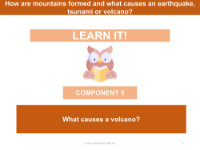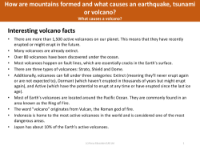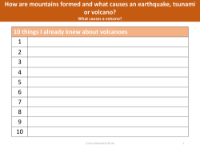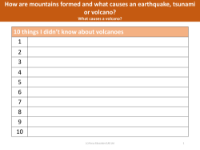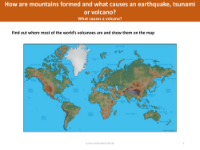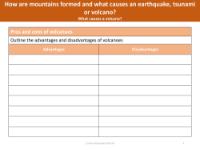How does a volcano erupt - Info pack

Geography Resource Description
Volcanic eruptions are dramatic natural events where magma from the Earth's upper mantle makes its way to the surface, resulting in the outpouring of lava and the accumulation of ash deposits. This process occurs when the magma, a molten rock beneath the Earth's crust, is driven upwards by the pressure of explosive gases. As the magma escapes through vents or holes, it erupts as lava, which cools and solidifies to gradually build the mountainous structure of a volcano. Over time, with each eruption, the volcano grows taller as layers of lava and ash accumulate.
The mechanics of a volcanic eruption can be likened to a pot of chilli boiling over on a stove when the steam has no outlet. In the case of a volcano, the 'chilli' is the magma mixed with volatile gases under the Earth's crust. The crust itself is fragmented into tectonic plates that grind against each other, creating immense pressure. When this pressure becomes too great, it forces the magma to burst through the Earth's surface. The eruption can be explosive, unleashing lava that can exceed 2000 degrees Fahrenheit, along with poisonous gases and ash that pose significant risks to both the environment and human health. The sheer force of these eruptions can lead to widespread destruction, illustrating the powerful and hazardous nature of volcanoes.
